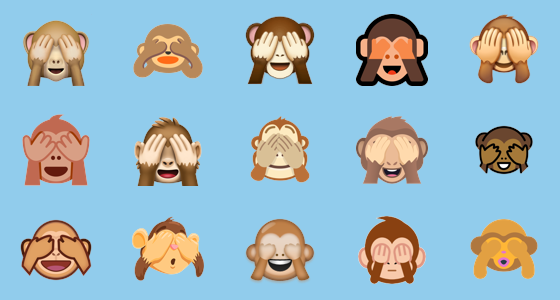What Does the Monkey Emoji Mean? A Comprehensive Guide
The use of emojis has become an essential part of modern communication, allowing people to express emotions and ideas quickly and effectively. One such popular emoji is the monkey emoji ðŸ’. But have you ever wondered about the meaning behind this adorable little primate symbol? In this comprehensive guide, we will explore the origins, interpretations, and various uses of the monkey emoji to uncover its true significance. Let's delve into the world of the 💠and discover what it really means!
I. The Evolution of Emojis:
To understand the meaning of the monkey emoji, we must first explore the fascinating history of emojis. Emojis were first introduced in the late 1990s in Japan and quickly spread worldwide, becoming an integral part of digital communication across various platforms. Today, emojis have evolved into a universal language, conveying emotions and ideas beyond linguistic barriers.
II. The Monkey Emoji's Appearance:
The monkey emoji, represented as ðŸ’, features a cute and playful image of a monkey with a long tail and expressive eyes. This design closely resembles a cartoon depiction of a monkey and comes in different variations across different platforms and operating systems.

Monkey Emoji
III. Monkey Emoji as Playfulness:
One of the primary interpretations of the monkey emoji is playfulness. Monkeys are known for their mischievous and lively behavior, and the 💠emoji is often used to convey a sense of fun, joy, and playfulness in digital conversations.
IV. Monkey Emoji as Imitation:
Another common meaning associated with the monkey emoji is imitation. Monkeys are skilled mimics, and people often use this emoji to playfully imitate others or highlight situations where someone is imitating behaviors or actions.
V. Monkey Emoji as Cuteness:
With its adorable appearance, the 💠emoji is frequently used to express cuteness. Just like other cute animal emojis, such as the puppy 🶠or kitten ðŸ±, the monkey emoji adds a touch of charm to messages.

Monkey Emoji as Cuteness
VI. Monkey Emoji as Representing Actual Monkeys:
Beyond the symbolic meanings, the monkey emoji can also be used to refer to actual monkeys, especially in conversations related to nature, wildlife, or even playful references to visiting the zoo.

Actual Monkeys
VII. Cultural and Regional Interpretations:
Cultural backgrounds and regional influences can shape the interpretation of emojis, including the monkey emoji. While some cultures may perceive monkeys as playful and positive creatures, others may associate different traits or beliefs with them. Understanding these nuances is crucial to avoid miscommunication and promote cross-cultural understanding.
VIII. Monkey Emoji and Social Media:
On social media platforms, the monkey emoji is frequently used in captions, comments, and reactions. Its versatility makes it an excellent choice for expressing various emotions, reactions, and sentiments, from humor and happiness to frustration and sarcasm.
IX. Monkey Emoji and Memes:
In the realm of internet memes, the monkey emoji has found its place in various humorous and relatable contexts, further solidifying its status as a symbol of playfulness and mischief.
X. Conclusion:
The monkey emoji 💠is much more than a simple digital character; it carries a rich tapestry of meanings and interpretations. From representing playfulness and cuteness to symbolizing imitation and real monkeys, this little primate has become an essential part of modern communication.
Understanding the various connotations and cultural influences behind the monkey emoji can enhance our digital interactions and promote clearer communication in the vast landscape of online conversations. So, the next time you come across the 💠emoji, remember its multifaceted meanings and let it add a touch of playfulness to your messages!